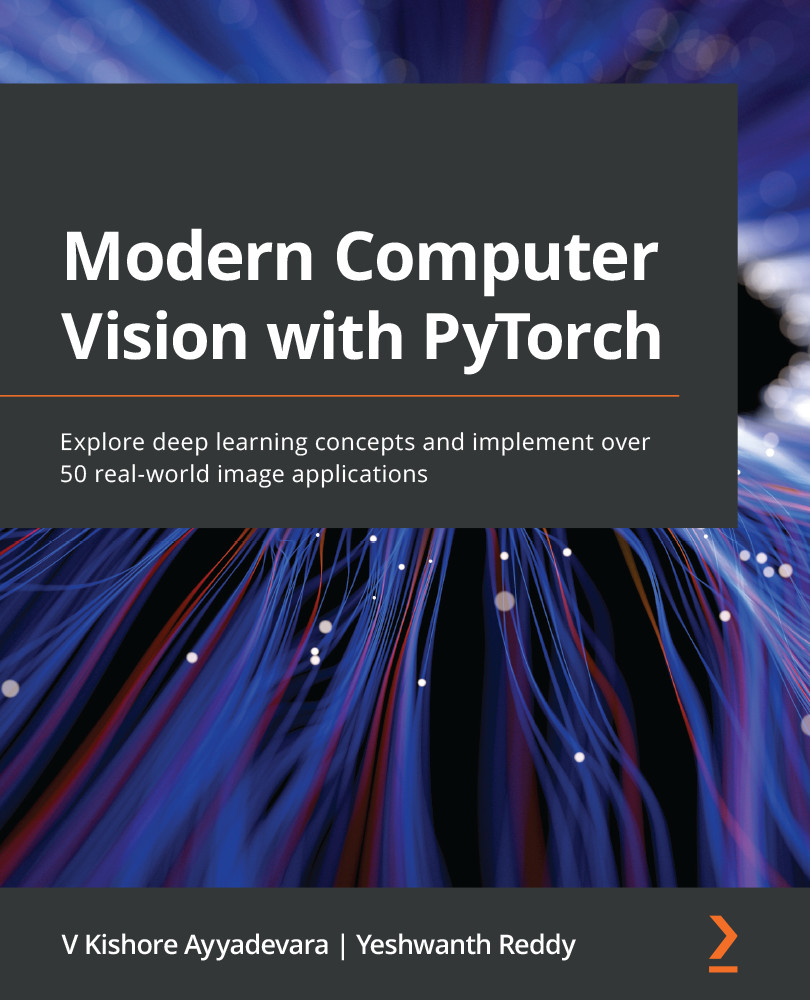In the previous scenario, we learned about how CNNs help in predicting the class of an image when it is translated. While this worked well for translations of up to 5 pixels, anything beyond that is likely to have a very low probability for the right class. In this section, we'll learn how to ensure that we predict the right class, even if the image is translated by a considerable amount.
To address this challenge, we'll train the neural network by translating the input images by 10 pixels randomly (both toward the left and the right) and passing them to the network. This way, the same image will be processed as a different image in different passes since it will have had a different amount of translation in each pass.
Before we leverage augmentations to improve the accuracy of our model when images are translated, let's learn about the various augmentations that can be done on top of an image.
Image augmentations
So far, we have learned...


